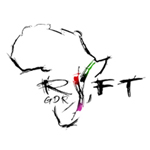The second GDR Rift seminar
It took place on March 24 , 2023 at 3:00pm (Paris time) and was broadcasted live on Zoom.
Dr. Laurent Husson, ISTerre, Grenoble
Hominin dispersal across transient landscapes. From SE Asian H. erectus to African hominins, a prospective view
Several waves of hominin dispersal took place from the Pleistocene onwards. This time scale is long enough to consider that the environment was not only different from what it is today, but also that it was unsteady: both the climate and the landscapes changed at a pace that possibly compares to their dispersal. In order to unravel the behaviors and migration pathways of early humans, it is necessary to tie a timeline to the changes in their physical environments. Using the case study of Homo erectus in SE Asia, I will show reconstructions of the past landscapes and climates provide valuable clues to unravel the dispersal of hominins. Numerical models of landscape evolution permit to reconstruct the past physiography. We used these reconstructions as boundary conditions to ecological movement simulations. The probabilistic assesment of these displacements sheds a new light on the modalities of displacement of hominins across the changing environment of Sundaland. The purpose of this presentation is to introduce this tool and assess whether it can help solve long-standing paleoanthropological questions in the East African Rift System, at the crossroads between geological and anthropological research at the core of the GDR Rift interdisciplinary program.
Laurent Husson works as a researcher at CNRS at ISTerre, Grenoble. Originally trained as a geologist, his expertise gradually drifts towards Earth system sciences, encompassing the interactions between the solid Earth and the atmosphere, hydrosphere, and biosphere.



